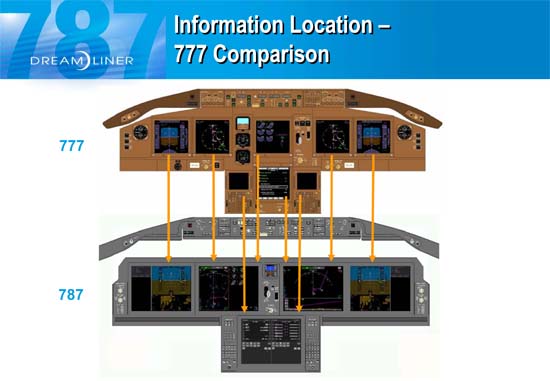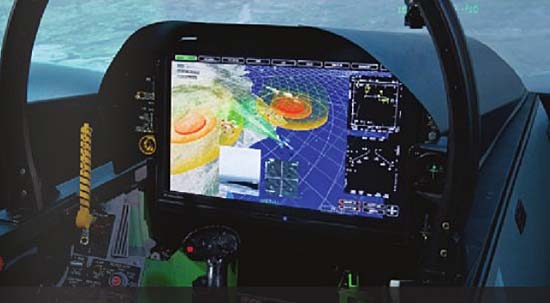Life on the Big Screen
A new kind of cockpit
/https://tf-cmsv2-smithsonianmag-media.s3.amazonaws.com/filer/6c/38/6c38cdaa-794e-46c8-b609-e576458fefa7/747_cockpit1.jpg)
The “glass cockpit,” named for the new generation of flat panel, liquid crystal displays (LCDs), is commonplace now in all types of aircraft from the Cessna to the space shuttle. LCD technology began to appear in earnest in the 1990s. Today, with the continued price plunge of electronic displays, the perforated instrument panel, like that seen in the old 747s, has become a museum relic.
Most cockpit LCDs aren’t much bigger than about six by six inches. The Airbus A380 has larger ones—eight of them— each measuring about six by nine inches.
And we’ve been impressed with the U.S. Navy’s EA-18G Growler’s backseat display, used by the crew’s electronic warfare officer. Measuring eight by 10 inches, the Growler’s interactive touch screen can show just one scene, such as a moving map of the terrain beneath the jet, or multiple scenes at once.
Next up: The Boeing 787 Dreamliner. The next-generation passenger jet will amp up the display size with five screens, each measuring nine inches high by 12 wide.
Still not big enough.
Recently, at the Navy League expo in Washington, D.C., Boeing offered a mockup of an F/A-18E/F Super Hornet of the future. The pilot, and his weapons systems officer in the F model, would each use a single, 11-x-19-inch flat panel touch-activated display that replaces nearly every switch and gauge. For now Boeing is offering the new display to potential foreign customers, such as Canada. The U.S. Navy hasn’t committed to it, as they’d rather keep things standardized; having already taken delivery of some 1,500 older Hornets and about 500 Super Hornets, none with the science fiction-y single screen, they’d rather have pilots recognize the cockpit each time they strap in.
But for future airplanes, who better to be designing this stuff than college students:


